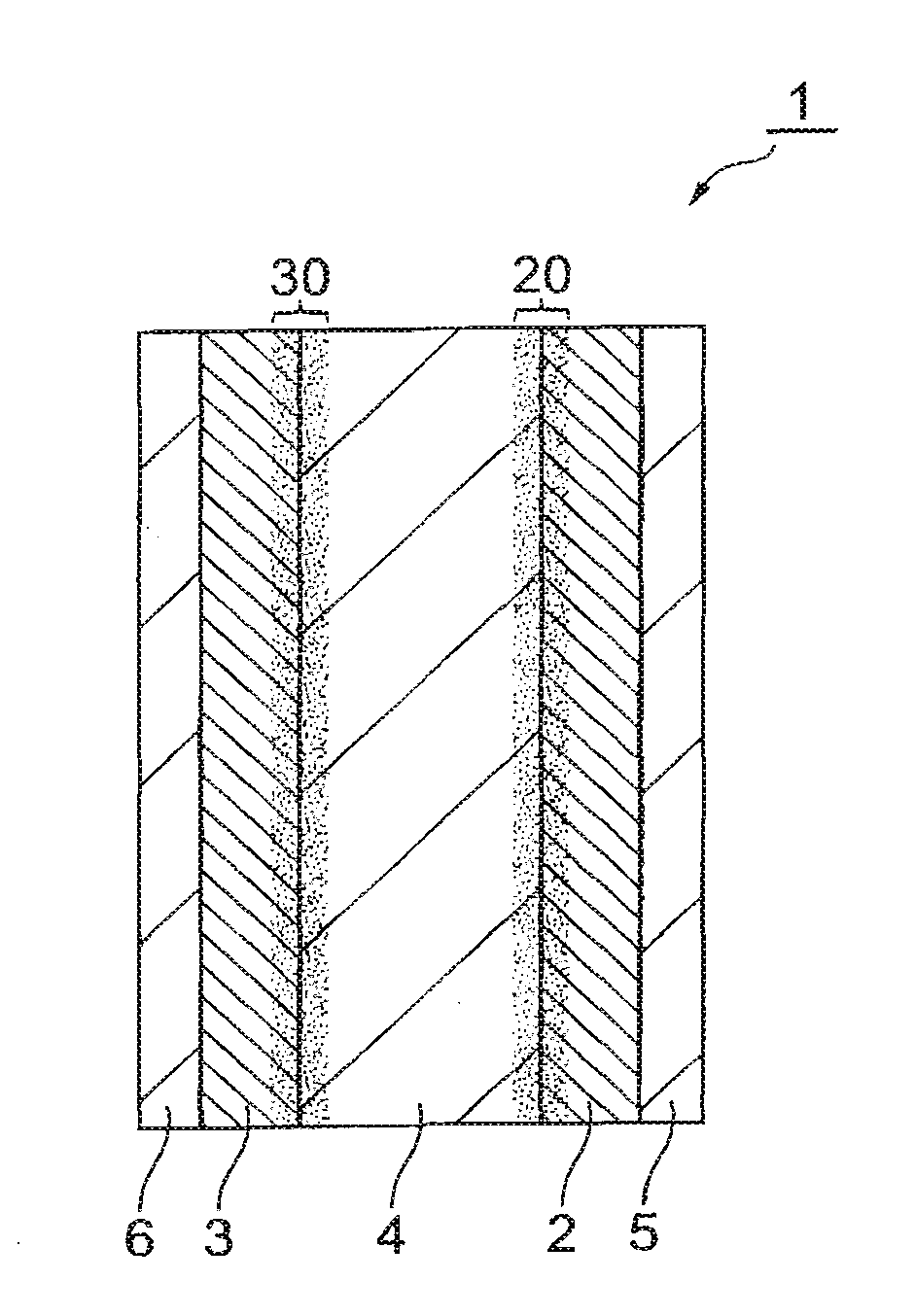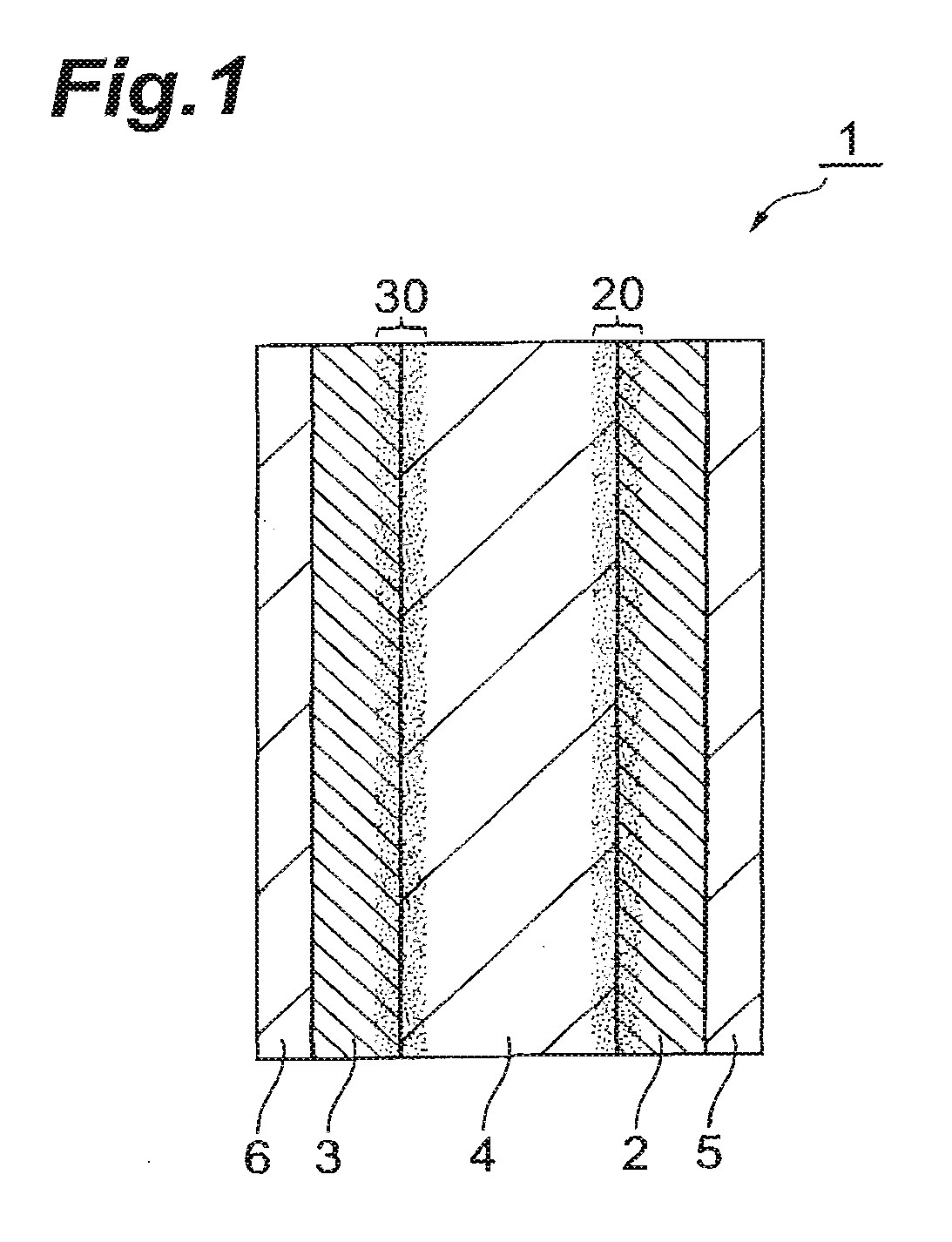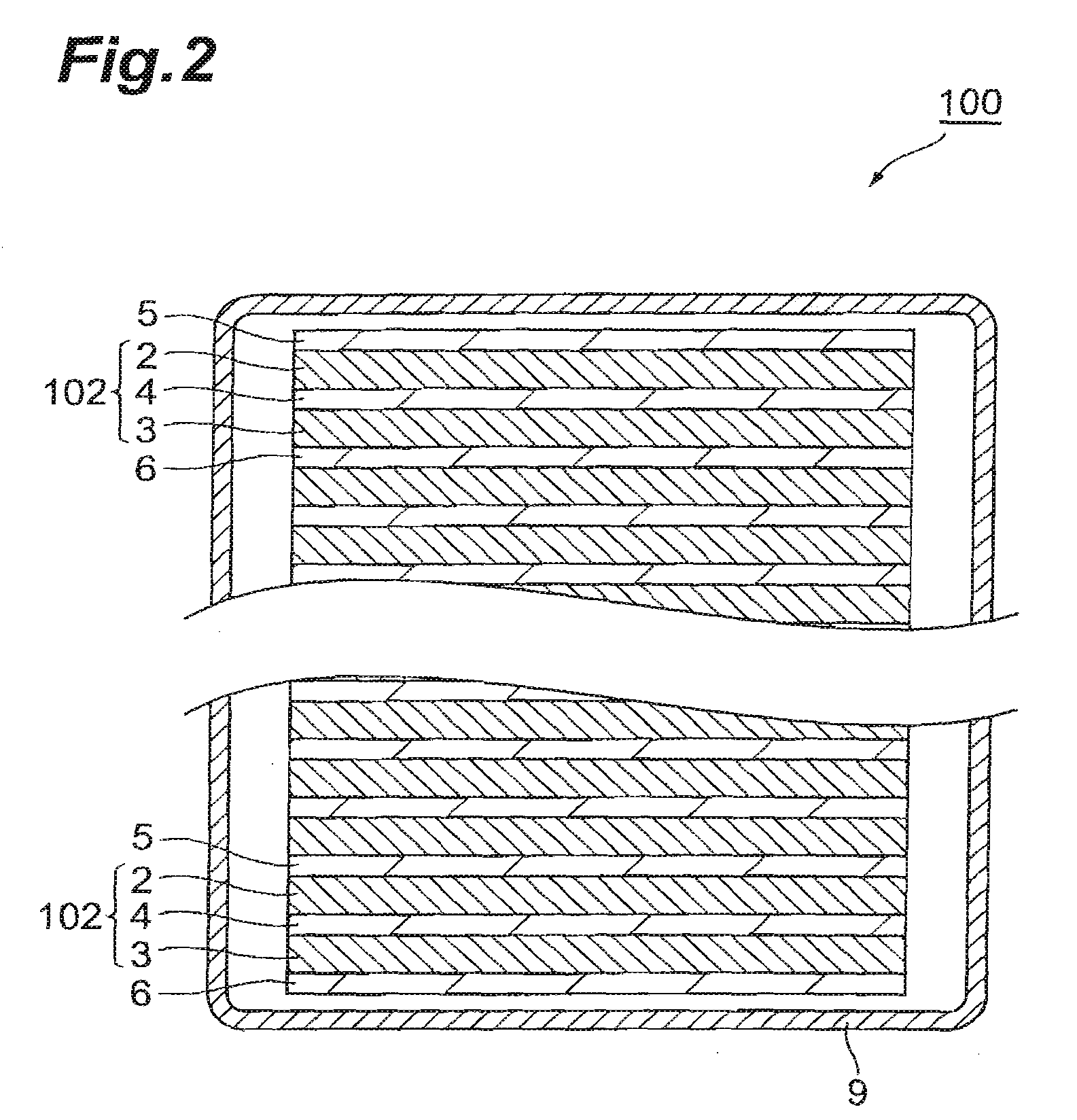All-solid-state lithium-ion secondary battery and production method thereof
a lithium-ion secondary battery, all-solid-state technology, applied in the direction of sustainable manufacturing/processing, non-aqueous electrolyte cells, cell components, etc., can solve the problems of insufficient high-rate discharge characteristic, and achieve excellent high-rate discharge characteristic and high-ion conductivity
- Summary
- Abstract
- Description
- Claims
- Application Information
AI Technical Summary
Benefits of technology
Problems solved by technology
Method used
Image
Examples
example 1
[0080]1.25 equivalents of lithium acetate were mixed in 1 equivalent of titanium isopropoxide, and 20 equivalents of isopropanol and 1 equivalent of polyvinylpyrrolidone were further added therein and stirred to obtain a sol anode precursor.
[0081]6 equivalents of titanium butoxide, 10 equivalents of ammonium dihydrogenphosphate, and 5 equivalents of lithium acetate were mixed in 1 equivalent of aluminum butoxide, and 20 equivalents of butanol were further added therein and stirred to obtain a sol solid electrolyte layer precursor.
[0082]1 equivalent of lithium acetate, 20 equivalents of acetic acid, 20 equivalents of water, 20 equivalents of isopropanol, and 1 equivalent of polyvinylpyrrolidone were added in 1 equivalent of cobalt acetate and stirred to obtain a sol cathode precursor.
[0083]Next, a Ni paste was applied onto a PET film and dried to form a Ni layer as a current collector. The sol anode precursor was applied onto this Ni layer by a nozzle method. Subsequently, a nozzle w...
example 2
[0086]A chip-type all-solid-state lithium-ion secondary battery of Example 2 was fabricated in the same manner as in Example 1, except that screen printing was employed instead of the nozzle method, as the method of applying the anode precursor solid electrolyte layer precursor, and cathode precursor.
[0087]With the resulting all-solid-state lithium-ion secondary battery, the interface between the anode and the solid electrolyte layer and the interface between the cathode and the solid electrolyte layer were checked with SEM and TEM and it was confirmed that the mixed region (thickness: 0.5 μm) in which the constituent materials of the anode and the solid electrolyte layer were mixed was formed at the interface between the anode and the solid electrolyte layer and that the mixed region (thickness: 0.3 μm) in which the constituent materials of the cathode and the solid electrolyte layer were mixed was formed at the interface between the cathode and the solid electrolyte layer.
example 3
[0088]A chip-type all-solid-state lithium-ion secondary battery of Example 3 was fabricated in the same manner as in Example 1, except that spin coating was employed instead of the nozzle method, as the method of applying the anode precursor, solid electrolyte layer precursor, and cathode precursor.
[0089]With the resulting all-solid-state lithium-ion secondary battery, the interface between the anode and the solid electrolyte layer and the interface between the cathode and the solid electrolyte layer were checked with SEM and TEM and it was confirmed that the mixed region (thickness: 0.3 μm) in which the constituent materials of the anode and the solid electrolyte layer were mixed was formed at the interface between the anode and the solid electrolyte layer and that the mixed region (thickness: 0.3 μm) in which the constituent materials of the cathode and the solid electrolyte layer were mixed was formed at the interface between the cathode and the solid electrolyte layer.
PUM
| Property | Measurement | Unit |
|---|---|---|
| temperature | aaaaa | aaaaa |
| pore size | aaaaa | aaaaa |
| particle size | aaaaa | aaaaa |
Abstract
Description
Claims
Application Information
 Login to View More
Login to View More - R&D
- Intellectual Property
- Life Sciences
- Materials
- Tech Scout
- Unparalleled Data Quality
- Higher Quality Content
- 60% Fewer Hallucinations
Browse by: Latest US Patents, China's latest patents, Technical Efficacy Thesaurus, Application Domain, Technology Topic, Popular Technical Reports.
© 2025 PatSnap. All rights reserved.Legal|Privacy policy|Modern Slavery Act Transparency Statement|Sitemap|About US| Contact US: help@patsnap.com



